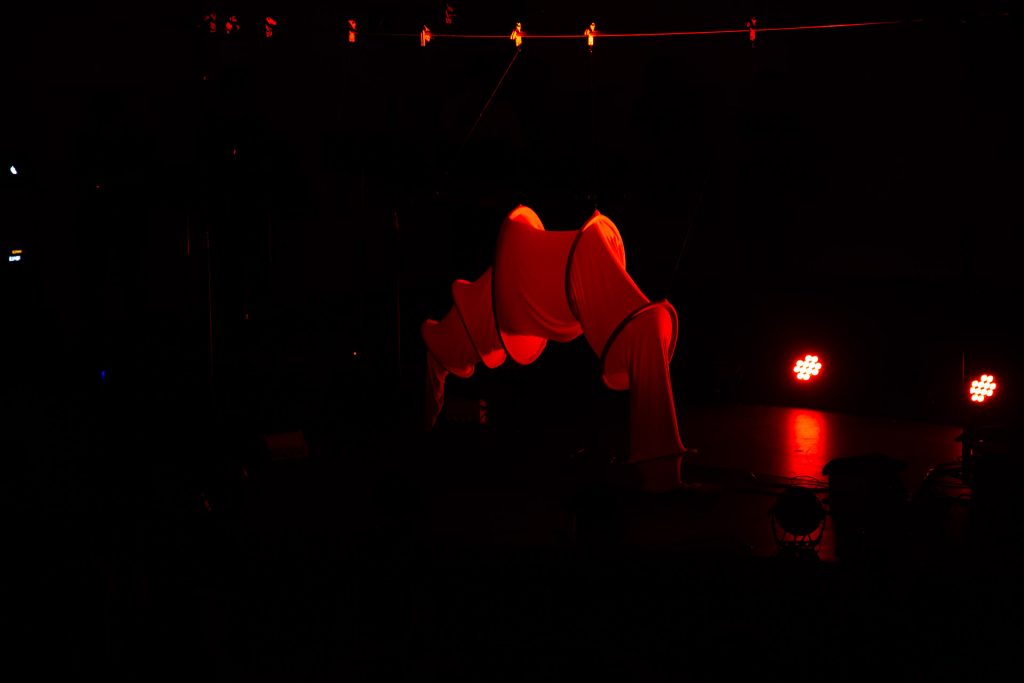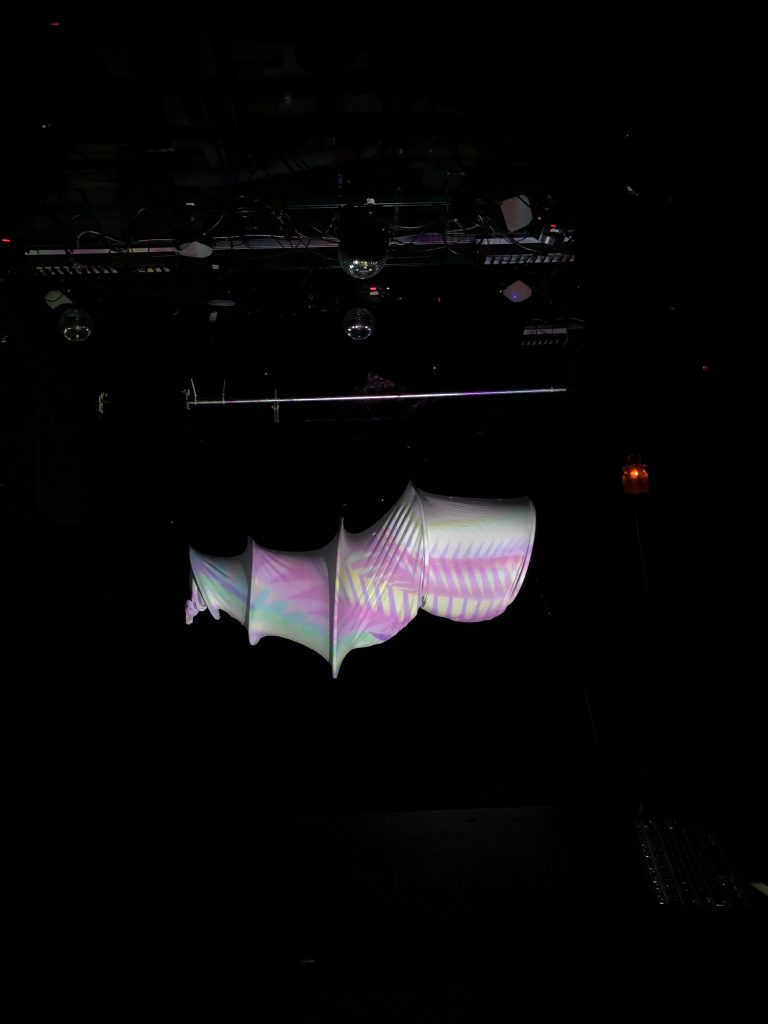
1.Reflect and write about your final project and performance. Write about what it actually is, rather than what you intended it to be. In this section, do not write about mistakes, just write about what your project was as if you were to be seeing it for the first time.
The channel exhibited in the final performance appeared to be a sort of being that was using all of its strength move yet not being able to move much at all. Perhaps this living being, was just on the edge between life and death. The slow movements, in sink with the music, gave the impression that even the simple movements were seemingly draining. The movements resembled a breathing or crawling motion. The back lighting caused the channel to appeared as a volume, glowing from the inside. Perhaps the energy of the form was being translated as light for the audience to understand that there was some sort of “life” within the channel.

2. Reflect and write about your team’s process for creating your project. How did you develop your idea? How did the project change as you made it?
Anna and I started our project with the idea of a dress and sand somehow being combined. Over the course of several weeks, the form changed many times while our core idea stayed relatively the similar. When defining the goal of our project, we described that we wanted our piece to represent the transference of energy from one body to another.
The overall form changed many times from individual cones and eventually to the final form of a channel. The design process was influenced by the tools available, time, and our individual vision for what we wanted to create.
In the final weeks of the project we decided to abandoned the idea of having “energy” shown in a physical form, the styrofoam balls were complicating the project in a way that was limiting our movement. We decided to give up on that part of our idea and focus on the movement. The lighting and movement gave the channel character. On its own the channel appeared as a still mass, with additional movement and lighting it gained a life-like quality. This is unique to this sort of category of soft sculpture.

3. What did you learn through this project? What was successful? What would you change in the future?
It takes a lot of planning, testing, preparation to put together a successful performance. It is much better to find a project’s “weak points” earlier in the process because it will give some time to go back and edit some things. The closer one gets to a deadline, the more likely it is that certain things will go unresolved.
Our project required a fair amount of testing patterns and hoop sizes. In the final weeks of work we decided to make a “final” piece with hoops and fabrics pattern pieces that were all the same size, we later realized that this piece did not have nearly as much of a presence on the stage as the previous on. Upon this realization, we went back to our original idea of having a channel that does not fold over.
Knowing more about the rigging process and the patterns. I would have wanted to work more on the choreography and lighting. Unfortunately it was pushed aside and we weren’t able to spend as much time on it as we had wanted. Once we were ready to work on lighting, there were several obstacles standing in the way of testing. This is the nature of getting ready for a performance, it is important to always keep in mind that everything takes much longer than one expects it to take.


Leave a Reply
You must be logged in to post a comment.